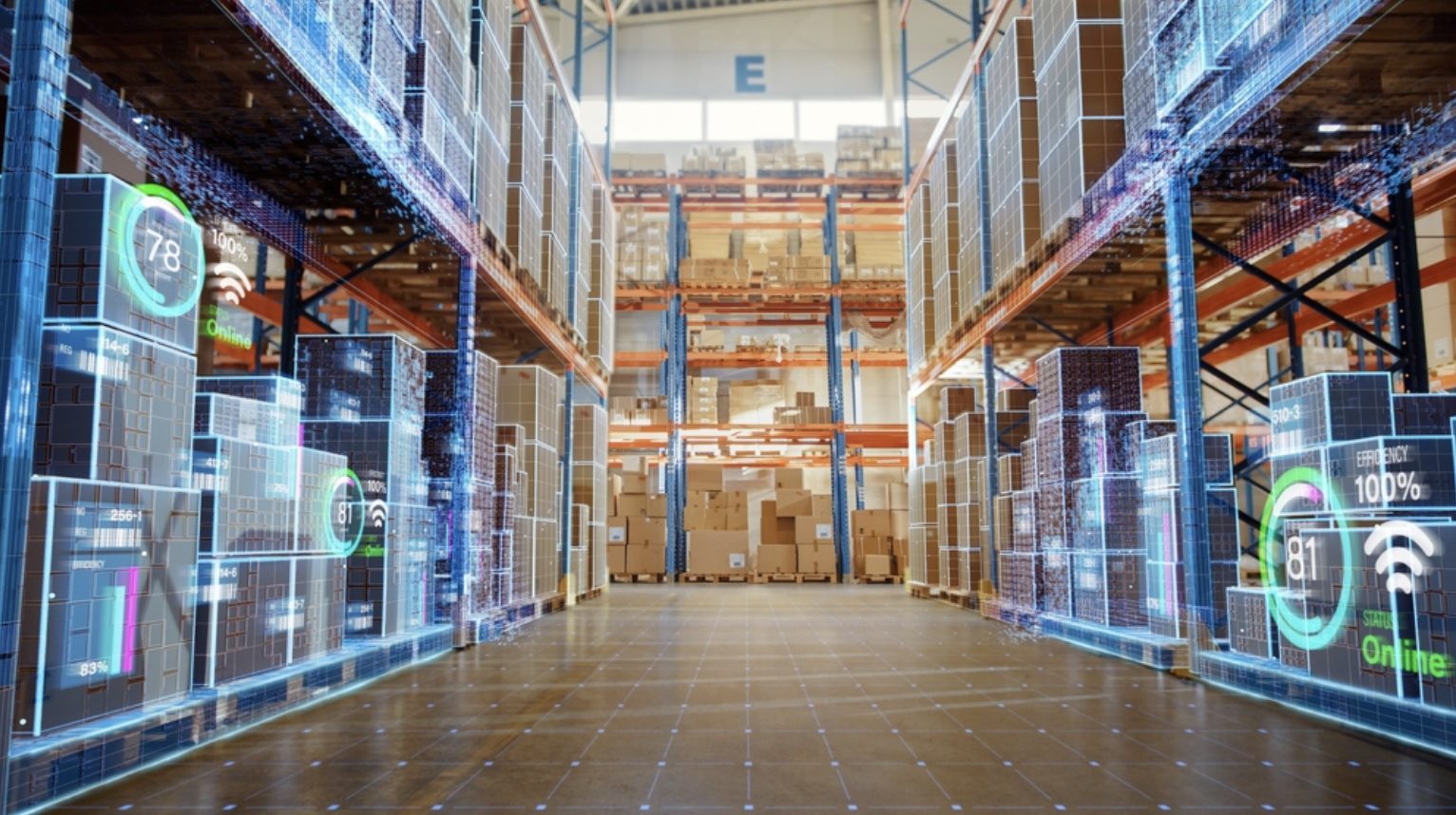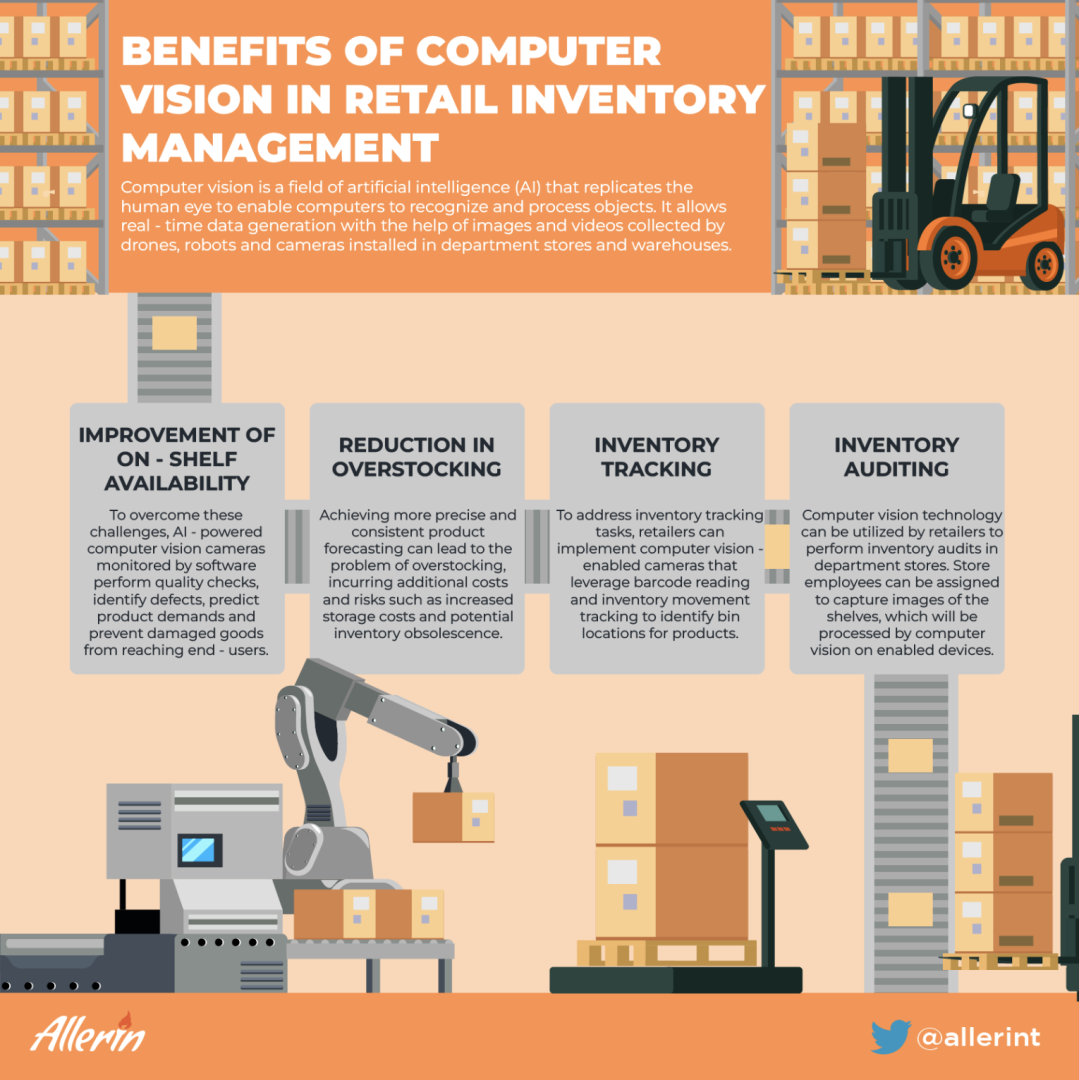Comments
- No comments found

Retail business owners are often faced with issues in inventory management, which hampers the development of long-term customer relationships.
Adopting computer vision in retail inventory management is a pioneering solution to build robust operations that will meet business goals.
The retail industry is significantly impacted by customer demand, which necessitates investments in improving consumer experiences. Implementation of computer vision in retail presents an ideal solution for enhancing inventory management - a critical aspect of the retail business - as it entails several interdependent processes leading to final product delivery. Any minor discrepancy in this process can potentially jeopardize customer satisfaction and the overall reputation of the company.
Computer vision is a field of artificial intelligence (AI) that replicates the human eye to enable computers to recognize and process objects. It allows real-time data generation with the help of images and videos collected by drones, robots, and cameras installed in department stores and warehouses. This data can be analyzed to meet operational demands, increase sales output and improve the consumer experience. According to the 29th Annual Retail Study by RIS, over 40 % of retailers will adopt computer vision technology for their business operations in the next two years. Computer vision in retail inventory has multiple benefits, such as:

Employing computer vision technology in retail inventory management presents a viable solution to reduce out-of-stock rates, enhance on-shelf availability and optimize the overall consumer experience. Ineffective management of products on the shelf can lead to significant revenue loss for retailers as customers may shift to competing vendors due to unsatisfactory experiences. To overcome these challenges, AI-powered computer vision cameras monitored by software perform quality checks, identify defects, predict product demands and prevent damaged goods from reaching end-users. Additionally, these systems can place orders with suppliers for in-demand products, further streamlining inventory management processes.
The retail industry is often plagued by labor shortages, necessitating the optimization and appropriate allocation of human resources. To address inventory tracking tasks, retailers can implement computer vision-enabled cameras that leverage barcode reading and inventory movement tracking to identify bin locations for products. Inventory tracking through computer vision also aids in preventing misplaced items, which can delay product delivery and require additional time for store employees to locate. By utilizing computer vision technology, retailers can accurately track products and reduce associated costs.
Computer vision technology can be utilized by retailers to perform inventory audits in department stores. Store employees can be assigned to capture images of the shelves, which will be processed by computer vision on enabled devices. Analyzing the resulting data can provide insights and analytics to store managers, allowing them to audit in-store shelves and identify any inconsistencies, and take appropriate corrective measures.
Achieving more precise and consistent product forecasting can lead to the problem of overstocking, incurring additional costs and risks such as increased storage costs and potential inventory obsolescence. Retailers can mitigate these challenges by leveraging computer vision technology that relies on previously collected data to improve forecasting accuracy.
With innovation, computer vision in retail inventory management is becoming more user-friendly, cost-effective and accurate. This is encouraging retail business owners to leverage technology to boost their business without major changes in business operations. With the help of computer vision, they can improve sales, build long-term customer relationships and optimize their operations seamlessly.
Naveen is the Founder and CEO of Allerin, a software solutions provider that delivers innovative and agile solutions that enable to automate, inspire and impress. He is a seasoned professional with more than 20 years of experience, with extensive experience in customizing open source products for cost optimizations of large scale IT deployment. He is currently working on Internet of Things solutions with Big Data Analytics. Naveen completed his programming qualifications in various Indian institutes.
Leave your comments
Post comment as a guest